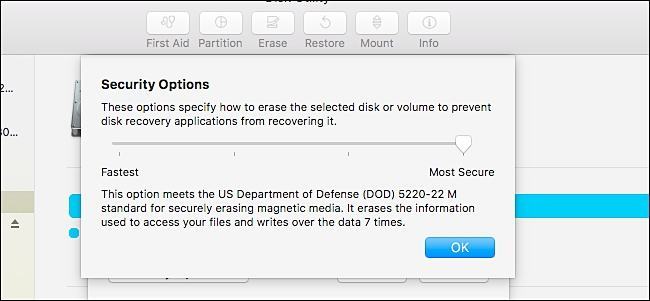

- #Secure erase hard drive how to#
- #Secure erase hard drive update#
- #Secure erase hard drive software#
- #Secure erase hard drive windows#
#Secure erase hard drive update#
Update III: Well, it appears that bad information can be found on the web.
#Secure erase hard drive windows#
Maybe someone well-versed in Windows floppy booting can confirm. Update II: A late commenter says "Floppy boot does not understand SATA drives and thus the method described does not work." I don't know if it is true or not, but if it is it is worth knowing. There's more, but if this is more than you want to deal with then Secure Erase isn't for you. Master or slave jumper setting is preferred. Avoid setting the jumpers to CS (cable select) on the hard disk drives. Make sure that the jumpers on the hard disk drives are correctly configured. All ATA hard disk drives connected to the main system board will be identified and their information displayed. Type "hdderase" at system/DOS prompt to run HDDerase.exe. Make sure to set the correct boot priority setting in the system BIOS. Boot the computer in DOS using the bootable disk. For those of you who'd like to judge how tricky this is - and it is definitely not for newbies - here's a quote from the instructions:Ĭopy the downloaded file, HDDerase.exe onto the created floppy/CD-ROM bootable DOS disk.


#Secure erase hard drive how to#
Update: Some folks have commented that I didn't actually say how to use the utility, leaving that to the readme. Hughes research, so he and his grad students can no longer support the software. To use it you'll need to know how to create a DOS boot disk - in XP you can do it with the "Format" option after you right-click the floppy icon in My Computer.Īugust 2009 Update: The NSA is no longer supporting Dr. Gordon Hughes of CMRR helped develop the Secure Erase standard.ĭownload his Freeware Secure Erase Utility, read the ReadMe file and you're good to go. The University of California at San Diego hosts the Center for Magnetic Recording Research. Secure Erase is approved for complying with the legal requirements noted above. Update: There is an open source external block overwrite utility called Boot and Nuke that is free.
#Secure erase hard drive software#
And the National Institute for Standards and Testing (NIST), who give it a higher security rating than external block overwrite software that you'd have to buy. There is no data recovery from Secure Erase. That includes the data on "bad blocks", the data left at the end of partly overwritten blocks, directories, everything. Secure Erase overwrites every single track on the hard drive. But hey, if you're smart enough to read Storage Bits, you're smart enough to not play with Secure Erase until you need to. Secure Erase is a loaded gun aimed right at your data. If this is so wonderful, why haven't you heard of it before? Because it's been disabled by most motherboard BIOSes.

Something called Secure Erase, a set of commands embedded in most ATA drives built since 2001. Not to mention the civil suits that can result. Criminal penalties include fines and prison terms up to 20 years. If you keep business, medical, or personal financial information on disks, simple deletion isn't enough to protect the data when disposing of the equipment.īesides identity theft, data loss may leave you or your company liable under federal laws such as HIPAA, Sarbanes-Oxley, Graham-Leach-Bliley or other state laws. That's what those "file recovery" programs look for: data in blocks that the directory says aren't in use. Your OS can't find it, but the data is still there. All that "delete" does is erase the file's reference information. What do you mean "delete" doesn't delete?įile information is maintained in a directory so your operating system can find it. But did you know that your disk drive has a built-in system for the secure erasure of data? You may already know that "deleting" a file does nothing of the sort.


 0 kommentar(er)
0 kommentar(er)
